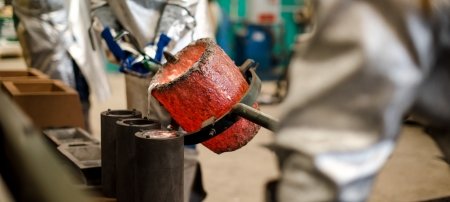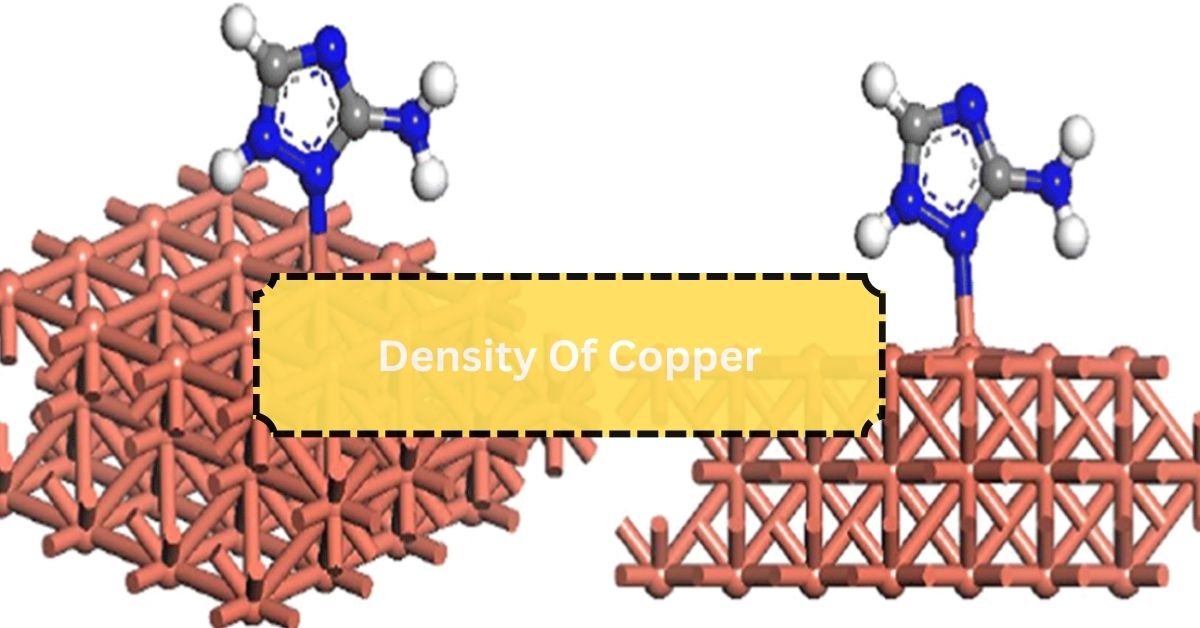Copper, a ubiquitous metal in our everyday lives, possesses a remarkable characteristic known as density. This essential property often denoted as the amount of mass packed into a specific volume plays a pivotal role in various applications of copper across industries.
The density of copper is 8.94 grams per cubic centimeter. This means that for every cubic centimeter of copper, it has a mass of 8.94 grams.
Let’s delve into the depths of this metal’s density, exploring its significance, calculation, and real-world implications.
What Does 8.94 G/Cm³ Signify? – Density Of Copper!
At the heart of copper’s physical properties lies its density, which stands at 8.94 grams per cubic centimeter. To put it simply, for every cubic centimeter of copper, there exists a mass of 8.94 grams.
This means that if you were to take a small, compact cube of copper with each side measuring just one centimeter, its weight would be precisely 8.94 grams.
In architecture, copper’s density contributes to both the aesthetic appeal and durability of structures. Its ability to withstand corrosion, coupled with a density of 8.94 g/cm³, makes it an attractive choice for roofing, façades, and decorative elements.
Copper’s distinctive patina, which develops over time, adds a touch of elegance to buildings while serving as a protective layer against the elements.
Architects and builders leverage copper’s density to create structures that stand the test of time, blending functionality with beauty.
The density of copper, at 8.94 grams per cubic centimeter, is a fundamental property with diverse applications across industries.
From engineering precise components to crafting intricate artworks, this characteristic defines the versatility and utility of copper.
By grasping the significance of density, we gain a deeper understanding of this enduring metal’s role in our world.
Read: Nysdcindx – Opportunities For Financial Growth!
Significance in Material Science and Engineering:

The density of copper is not merely a numerical value; it holds immense significance in the fields of material science and engineering. Engineers and metallurgists often rely on this property to design and create products with specific weight requirements.
For instance, in the aerospace industry, where weight is a critical factor for fuel efficiency, knowing the density of copper aids in the development of lightweight yet sturdy components.
Calculation of Copper Density – Simple Yet Crucial!
Calculating the density of copper is a straightforward process. As mentioned earlier, it is 8.94 grams per cubic centimeter. This means that to find the mass of a given volume of copper, you would multiply the volume (in cubic centimeters) by 8.94.
Conversely, if you needed to determine the volume of a certain mass of copper, you would divide the mass by 8.94. The density of copper also intersects with environmental sustainability efforts. Copper’s recyclability is a key factor in reducing waste and conserving resources.
Knowing its density aids in the sorting and processing of recycled copper, ensuring that it can be repurposed for new applications. The metal’s inherent properties remain unchanged even after recycling, making it a valuable material in the circular economy.
As we look towards the future, the density of copper continues to be a cornerstone of innovation. In space exploration, where every gram of material carried into space matters, copper’s density guides the design of spacecraft components. Its reliability in extreme conditions, combined with a density of 8.94 g/cm³, makes it a trusted material for mission-critical parts.
Real-World Applications and Examples:
The density of copper finds application in numerous real-world scenarios. One such example is the construction industry, where copper pipes are widely used for plumbing.
By understanding copper’s density, plumbers can calculate the amount of copper needed for a specific project, ensuring efficiency in material usage.
Another compelling application is in the creation of electrical wiring. Copper’s high conductivity makes it an ideal choice for transmitting electricity.
However, the density comes into play when designing cables and wires, as the weight of the copper affects the ease of installation and overall structural integrity.
Read: https://bajartiktoks.com/como-y-porque-reiniciar-el-algoritmo-de-tiktok/
Density and Material Integrity:

In addition to its practical applications, the density of copper also impacts the structural integrity of objects made from this metal. For instance, in sculptures or architectural elements crafted from copper, knowing its density helps artists and architects ensure the stability and balance of their creations.
Exploring Variations in Density:
While the density of pure copper stands at 8.94 g/cm³, it is essential to note that this value can vary based on the form and purity of the metal.
Copper alloys, which are mixtures of copper with other elements such as zinc or nickel, exhibit different densities. This variability allows for creating materials with specific properties tailored to different needs.
Frequently Asked Questions:
1. How does the density of copper compare to other metals?
Copper’s density of 8.94 g/cm³ is relatively high compared to some other common metals. For instance, aluminum has a 2.70 g/cm³ density, while iron is 7.87 g/cm³.
2. Does the temperature affect the density of copper?
Yes, the density of copper can change with temperature variations. As temperature increases, the density of copper decreases slightly. This is an important consideration in applications where temperature changes are frequent.
3. Can the density of copper be used to identify the metal?
Absolutely! The density of copper is a unique characteristic that helps identify the metal. By measuring the density of a sample, scientists and analysts can confirm whether it is indeed copper.
4. How does the density of copper impact its price in the market?
The density of copper plays a role in its pricing, especially in industries where copper is bought and sold by weight. Higher density translates to more mass in a given volume, affecting pricing calculations.
5. Are there any health concerns related to copper’s density?
While copper itself is not harmful, its compounds can be toxic in high doses. Understanding the density of copper aids in proper handling and disposal practices to prevent environmental contamination.
Conclusion:
Copper has a density of 8.94 grams per cubic centimeter, indicating that every cubic centimeter of copper weighs 8.94 grams.
Read Also:























+ There are no comments
Add yours